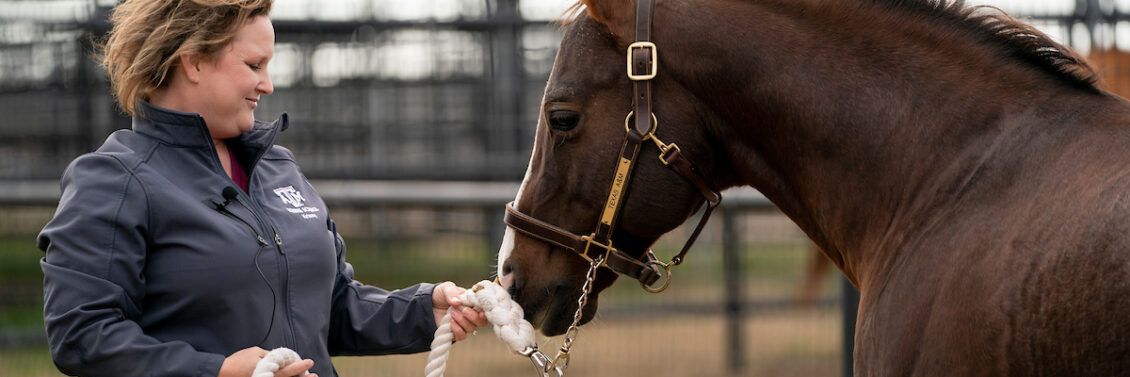Texas A&M Institute for Equine Sciences

A world-class equine program for thriving industry, horse welfare and the next generation of leaders
The Texas A&M Institute for Equine Sciences combines the world-class expertise of The Texas A&M University System to support the equine industry. The institute serves as a powerful catalyst for strengthening equine collaborations at all levels. Major goals of the institute include:
- Strengthened equine collaborations among public and private sectors and academia
- Enhanced care and welfare of horses
- World-class research and teaching infrastructure
- Top-tier education for students and professionals.
Background
Established by The Texas A&M University System Board of Regents in 2022, the institute formally aligns equine activities across the university system. It also builds upon programming that began in 2009 with The Equine Initiative at Texas A&M University, whose mission has been incorporated into operations of the Insitute for Equine Sciences.
The Equine Initiative championed the establishment of the undergraduate certificate in equine sciences and the $5 million Glenn Blodgett Equine Chair. It culminated in the 2014 construction of the $32 million Thomas G. Hildebrand DVM ’56 Equine Complex.
Impacts of the Equine Initiative also included funding of the Equine Nutrition Research and Undergraduate Equine Reproduction Teaching Complex. The program helped to modernize the Department of Animal Science equine curriculum and create the Equine Industry Management master’s degree. It also funded research across Texas A&M AgriLife and the School of Veterinary Medicine, increasing national visibility and securing operating dollars.
Institute for Equine Sciences Partners
The Texas A&M Institute for Equine Sciences brings together the world-class equine expertise of many organizations within The Texas A&M University System.


“The Institute for Equine Sciences can be the center of a united movement for collaborative research and education. Opportunities abound for building, supporting and leading discovery in equine health and welfare, human-animal bond, breeding and management, and translating science into the best practices for horse owners.
Contact the Institute for Equine Sciences
The Texas A&M Institute for Equine Sciences is located at the Thomas G. Hildebrand, DVM ’56 Equine Complex
3240 F and B Rd, College Station, TX 77843
Phone: 979-845-6098
